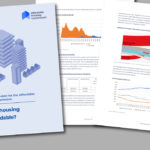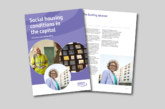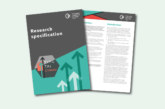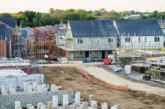Why is housing unaffordable? The Affordable Housing Commission’s latest report says 4.8 million people face housing affordability problems.
In the report’s Introduction, it says: ‘The evidence and arguments surrounding the causes of housing unaffordability in England are complex and often contested… However, there is an evolving evidence base around the reasons why housing has become unaffordable’.
In a bid to define and measure housing affordability, the research looks at the trends in the supply of affordable housing completions by tenure, as well as considering the various demand side issues.
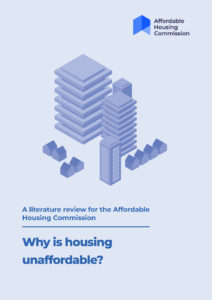 Whilst the causes of housing affordability in England maybe complex, general consensus is that we are simply not building anywhere near enough new homes to meet demand. In driving up the number of new homes needed across the country each year, it is essential that the right homes get built in the right places to properly reflect area demographics. One tenure type most certainly does not fit all. We need more genuinely affordable starter homes, more affordable accessible housing and resurgence in social housing.
Whilst the causes of housing affordability in England maybe complex, general consensus is that we are simply not building anywhere near enough new homes to meet demand. In driving up the number of new homes needed across the country each year, it is essential that the right homes get built in the right places to properly reflect area demographics. One tenure type most certainly does not fit all. We need more genuinely affordable starter homes, more affordable accessible housing and resurgence in social housing.
Council housing lists are bourgeoning, there are many people languishing in private rent accommodation struggling to afford the rent, forced to move from place to place and unable to lay down roots because of insecure tenancies, and that’s before factoring in the number of people only a mortgage payment away from becoming homeless. Housing affordability is a huge and multi-faceted issue.
The Affordable Housing Commission’s ‘Why is housing unaffordable?’ report says: ‘Housing campaigners point out that even though the supply of affordable homes (on the Government’s definitions) have recently increased, the provision of social rented homes and intermediate housing remain historically very low.’
According to the Resolution Foundation, ‘the shrinking stock of social housing has seen the share of young families who live in it fall by around a third over the past 20 years, with 400,000 fewer living in council and housing association homes (poorer young families also lack the option of social housing).’
The report references the latest figures from MHCLG, which show a sharp fall in the supply of social rented homes over the 10-year period to 2017, ‘from a peak of 39,559 in 2010/11 to 6,463 (excluding social rented homes from S106 Agreements).’ The data also highlights that the ‘supply of intermediate housing also fell by half over the past decade, with a major reduction in new shared ownership properties.’ However the numbers of Affordable Rent properties rose sharply to 40,829 in 2014/15, before falling back to a provisional 26,838 in 2017/18.
The report considers public attitudes towards social housing. The Affordable Housing Commission’s dialogue with focus groups, for example, ‘showed that even people who grew up in social housing now tend to view it as a residual product for people who have ‘fallen off the bottom of society’, not as a tenure that is available for working families (something identified by Professor Hills at LSE over a decade ago).’
It was also identified in the report through the focus groups how ‘long waiting lists and points-based allocations policies effectively exclude traditional ‘working class’ households. Struggling renters who would benefit from lower rents, especially those with young children, believe that social housing is not available for them.’ The focus groups highlighted an ambivalent attitude towards the prospect of living in social housing, which adds to the stigma that unfortunately currently surrounds this tenure, which is incredibly sad and urgently needs to be addressed.
Numerous factors are considered in the report as it seeks to identify ‘why housing is unaffordable’, these include land and planning, speed of development, household growth, housing and tax, the ‘financialisaton’ of housing, distribution of stock and welfare reforms, amongst others. Using a set of measures to capture affordability for renters, homeowners and would-be buyers, the report finds that 4.8m households have affordability issues and considers how this has changed over time.
Responding to the report, Local Government Association (LGA) Housing Spokesman Cllr Martin Tett said: “Housing security is critical for the health and wellbeing of families and everyone deserves a safe, secure and affordable place to call home. Today’s report shows that the scale of the unaffordability crisis is escalating — impacting on families, places, and public services.
“At the most acute end, councils are currently housing over 200,000 homeless people in temporary accommodation, including over 120,000 homeless children. The loss of an assured shorthold tenancy is the greatest reason for people becoming homeless.
“In its forthcoming Spending Review the Government needs to empower councils to support more families by adapting welfare reforms, sustainably funding councils and reforming Right to Buy so that councils can resume their historic role and national housebuilders of good-quality, affordable homes.”
To download a copy of the Why is housing unaffordable? report click here.

